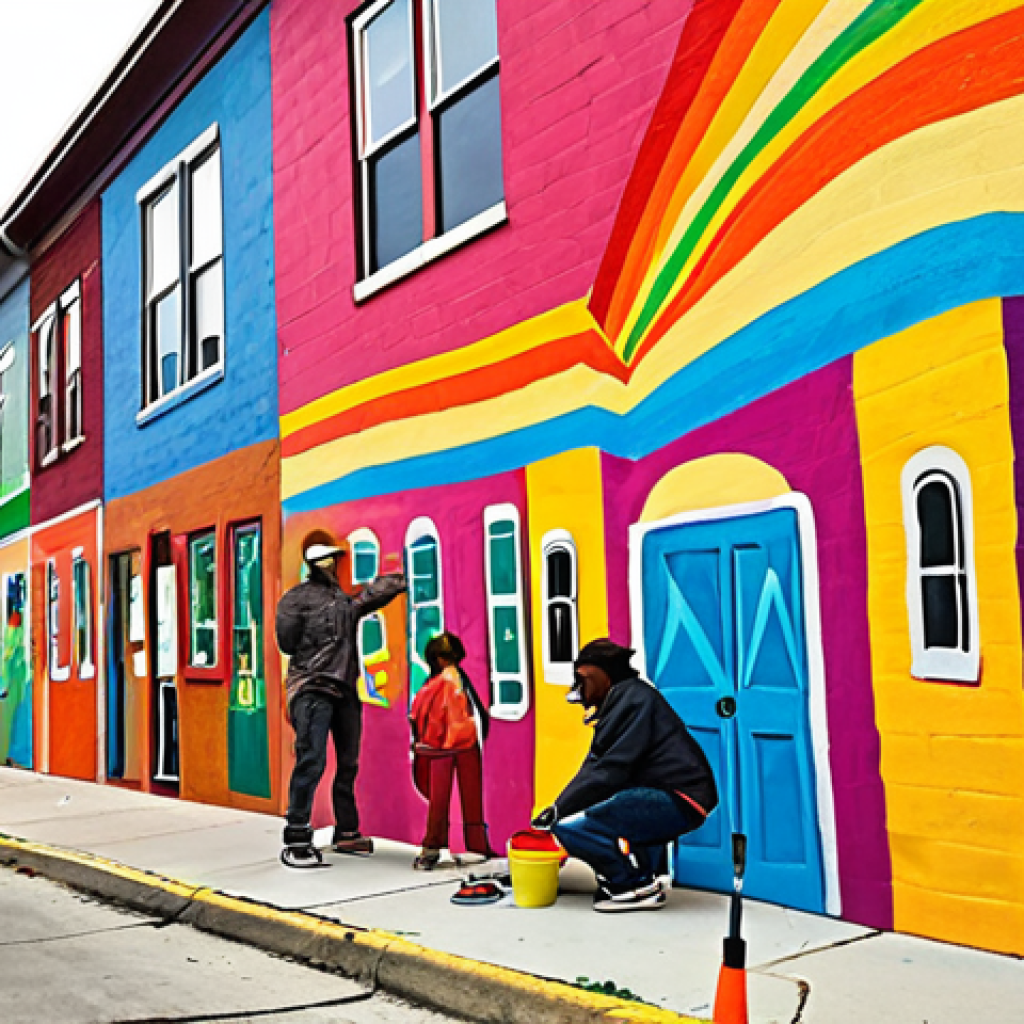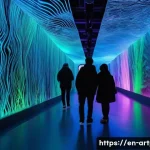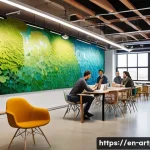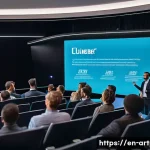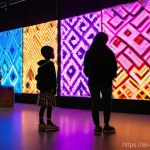Ever wonder how a passion for art can actually translate into a thriving career? It’s not always the most straightforward path, I know, but let me tell you, I’ve seen firsthand how a knack for cultural planning combined with a whole lot of dedication can really pay off.
We’re talking about more than just loving paintings or sculptures – it’s about curating experiences, fostering creativity, and bringing art to the community in meaningful ways.
It’s a world that’s constantly evolving, with digital art and immersive installations shaking things up. Plus, with renewed interest in arts funding and cultural tourism on the rise, there’s never been a more exciting time to get involved.
Let’s delve into how you can build a successful career at an arts and culture planning agency in the article below.
Alright, let’s dive into carving out a career in the vibrant world of arts and culture planning.
Crafting Your Niche: Specializing to Stand Out
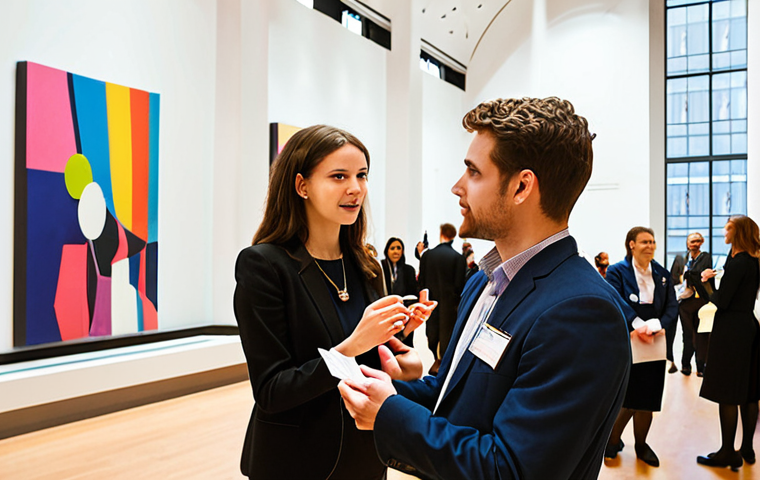
It’s easy to think that loving art is enough, but to truly thrive, you’ve got to find your specific angle. Trust me, generalizing is the quickest way to get lost in the shuffle.
Think about what genuinely excites you. Is it the meticulous process of preserving historical artworks, bringing cutting-edge digital installations to life, or maybe working with communities to develop public art projects?
I remember when I first started, I bounced around from contemporary to classical art, feeling overwhelmed and unsure. Then, I stumbled upon a small project focused on community-based murals, and something just clicked.
It was the intersection of art, social impact, and urban revitalization that got me hooked. Find that intersection for yourself, and you’ll not only be more passionate but also far more marketable.
Focusing on a Specific Art Form or Period
Consider whether you’re drawn more to classical art, contemporary installations, digital art, or perhaps even a specific historical period. Deep expertise in one area can make you a go-to person for projects related to that niche.
For example, becoming an expert in Baroque sculpture or street art movements can open doors to unique opportunities.
Targeting a Specific Community or Demographic
Another strategy is to focus on serving a particular community or demographic. Are you passionate about bringing art to underserved communities, working with youth, or promoting art that celebrates diversity and inclusion?
This specialization can make your work more meaningful and resonate with specific funding organizations and clients.
Networking Like a Pro: Building Relationships That Last
Okay, so you’ve nailed down your passion, but nobody’s going to magically hand you opportunities. Networking is absolutely key, and I’m not just talking about collecting business cards at stuffy gallery openings.
It’s about building genuine relationships with people in the field. Attend local art events, volunteer at museums, and, most importantly, strike up conversations.
Ask people about their career paths, their current projects, and the challenges they face. You’d be surprised how willing people are to share their experiences and offer advice.
I once landed a dream project simply by chatting with a curator at a local arts festival. We connected over our shared love of kinetic art, and she remembered me when a relevant opportunity came up.
And don’t forget online platforms! LinkedIn is your best friend. Join relevant groups, engage in discussions, and reach out to professionals whose work you admire.
Remember, networking isn’t about asking for favors; it’s about building mutually beneficial relationships.
Attending Industry Events and Conferences
Make a point to attend art fairs, museum conferences, and cultural planning workshops. These events provide opportunities to meet professionals, learn about industry trends, and potentially find mentors or collaborators.
Always come prepared with thoughtful questions and be ready to share your own interests and expertise.
Utilizing Online Platforms and Social Media
LinkedIn, Instagram, and Twitter are powerful tools for connecting with professionals in the arts and culture sector. Share your work, engage in discussions, and follow organizations and individuals that inspire you.
Consider starting a blog or podcast to share your insights and establish yourself as a thought leader.
Mastering the Grant Application Game: Securing Funding for Your Vision
Let’s face it: a huge part of working in arts and culture is securing funding. And that means mastering the art of grant writing. I’m not going to lie, it can be tedious and frustrating, but it’s also incredibly rewarding when you land a big grant that brings your project to life.
The key is to do your homework. Research different funding opportunities, understand the priorities of each organization, and tailor your application accordingly.
Don’t just recycle the same generic proposal for every grant. Spend time crafting a compelling narrative that showcases the impact of your project and demonstrates your ability to deliver.
And always, always proofread! Typos and grammatical errors can kill your credibility faster than you can say “Renaissance.”
Understanding Different Types of Grants and Funding Sources
Research various grant-making organizations, including government agencies, private foundations, and corporate sponsors. Each has different priorities and guidelines, so make sure your project aligns with their mission.
Learn to identify grants that support specific art forms, communities, or project types.
Crafting Compelling Grant Proposals
Your proposal should clearly articulate your project’s goals, methodology, and potential impact. Provide a detailed budget, timeline, and evaluation plan.
Highlight your experience and qualifications, and showcase the support of partners or collaborators. Don’t forget to tell a compelling story that captures the imagination of the reviewers.
Embracing Digital Tools and Trends: Staying Ahead of the Curve
This isn’t your grandma’s art world anymore. Digital technology is transforming everything, from art creation to exhibition design to audience engagement.
If you want to stay relevant, you need to embrace these changes. Learn about digital art forms like NFTs and virtual reality installations. Experiment with online marketing tools like social media advertising and email campaigns.
And, most importantly, be open to learning new skills. I remember when I had to learn how to use 3D modeling software for a museum exhibit. It was daunting at first, but it opened up a whole new world of creative possibilities.
Leveraging Social Media for Promotion and Engagement
Social media is an essential tool for promoting art events, sharing artist interviews, and engaging with your audience. Use platforms like Instagram, Facebook, and TikTok to showcase your work and build a community around your organization.
Learn to create visually appealing content and use targeted advertising to reach new audiences.
Exploring Digital Art Forms and Virtual Reality
Digital art is rapidly evolving, with new forms and technologies emerging all the time. Experiment with digital painting, animation, interactive installations, and virtual reality experiences.
These technologies can enhance storytelling, create immersive environments, and reach audiences in new ways.
The Art of Collaboration: Working Effectively with Artists and Communities
Art isn’t created in a vacuum. It’s the result of collaboration, communication, and mutual respect. Whether you’re working with artists, community members, or other organizations, it’s crucial to build strong relationships based on trust and understanding.
Take the time to listen to different perspectives, value diverse opinions, and be open to compromise. I’ve seen so many projects fall apart because of ego clashes or communication breakdowns.
Remember, you’re all working towards the same goal: to create meaningful and impactful art experiences.
Building Strong Relationships with Artists
Treat artists with respect and value their creative vision. Provide clear communication, fair compensation, and a supportive environment. Encourage collaboration and experimentation, and be open to new ideas.
Remember that artists are your partners, not just service providers.
Engaging with Local Communities
Engage with local communities to understand their needs and priorities. Incorporate community feedback into your projects and ensure that your work is accessible and relevant to the people you serve.
Consider hosting workshops, outreach events, and community consultations to build trust and foster participation. Here’s a table summarizing key skills and strategies for success in arts and culture planning:
| Skill/Strategy | Description | Benefits |
|---|---|---|
| Specialization | Focusing on a specific art form, period, or community | Increased expertise, targeted opportunities |
| Networking | Building relationships with professionals in the field | Access to mentors, collaborators, job leads |
| Grant Writing | Securing funding through grant applications | Financial resources for projects, increased credibility |
| Digital Skills | Embracing digital tools and trends | Enhanced promotion, broader audience reach |
| Collaboration | Working effectively with artists and communities | Stronger relationships, meaningful projects |
Navigating Ethical Dilemmas: Upholding Integrity in the Arts
In the world of arts and culture, ethical dilemmas are unfortunately common. From conflicts of interest to issues of cultural appropriation, there are many potential pitfalls to navigate.
It’s important to develop a strong ethical compass and be prepared to stand up for what you believe is right. Always prioritize transparency, accountability, and respect for diverse cultures and perspectives.
Don’t be afraid to ask questions, seek advice, and challenge unethical behavior. Your reputation and the integrity of the arts community depend on it.
Addressing Issues of Cultural Appropriation
Cultural appropriation occurs when one culture takes elements from another culture without understanding or respecting their original context. Be mindful of the potential harm caused by cultural appropriation and strive to engage with cultures in a respectful and collaborative way.
Consult with community members and experts to ensure that your work is culturally sensitive and authentic.
Managing Conflicts of Interest
Conflicts of interest can arise when your personal interests conflict with your professional obligations. Disclose any potential conflicts of interest to your organization or clients and recuse yourself from decisions where you have a vested interest.
Transparency and honesty are crucial for maintaining trust and credibility.
In Closing
Embarking on a career in arts and culture planning is a journey filled with creativity, collaboration, and community impact. By specializing in your passion, building genuine relationships, mastering grant writing, embracing digital tools, and upholding ethical standards, you can create a fulfilling and meaningful career. The arts need passionate advocates and innovative thinkers, so go out there and make a difference!
Useful Tips
1. Join local arts organizations and attend their events to network and learn about opportunities.
2. Volunteer at museums, galleries, and festivals to gain experience and make connections.
3. Take online courses or workshops to develop new skills in areas like grant writing, digital marketing, or event planning.
4. Create a professional website or portfolio to showcase your work and expertise.
5. Seek out mentors who can provide guidance and support as you navigate your career path.
Key Takeaways
To excel in arts and culture planning, focus on specializing in your niche, building strong networks, mastering grant applications, embracing digital tools, collaborating effectively, and upholding ethical standards. These strategies will help you create a successful and impactful career in the arts.
Frequently Asked Questions (FAQ) 📖
Q: So, I’m super passionate about art, but I’m not exactly a painter or sculptor. Can I still make it in arts and culture planning?
A: Absolutely! Think of it this way: the art world needs more than just artists. Arts and culture planning is all about the behind-the-scenes magic.
It’s about understanding how art interacts with the community, managing projects, securing funding, and creating accessible and engaging experiences. For example, I once worked on a project where we turned an abandoned warehouse into a vibrant community art space – that required zero painting skills but a ton of organizational and fundraising savvy.
If you’ve got a knack for bringing people together, managing projects, or even just understanding what makes an art exhibit pop, you’re already halfway there.
Seriously, think about your strengths and how they might translate. Maybe you’re a whiz with social media, excellent at writing grant proposals, or you’re a natural at event planning – all of those are incredibly valuable skills in this field.
Q: What kind of education or training should I consider if I want to work at an arts and culture planning agency? Do I need a fancy art history degree?
A: A formal education can definitely give you a leg up, but it’s not always about that “fancy art history degree.” I’ve seen people from all sorts of backgrounds thrive.
A degree in Arts Administration, Cultural Studies, or even Urban Planning with a focus on cultural development can be super helpful. Also, business skills are incredibly useful.
Don’t underestimate the value of a good MBA or courses in non-profit management. However, practical experience is gold! Internships at museums, galleries, theaters, or even smaller arts organizations can teach you more than any textbook.
Think about it: you get to see firsthand how events are planned, how budgets are managed, and how organizations interact with the community. Plus, networking at these places can open doors you never even knew existed.
Just the other day, a former intern of mine landed a job at a major contemporary art museum, all because of the connections she made during her internship.
Q: Okay, this all sounds great, but what’s the job market like? Is it even possible to find a stable career in this field, or is it all just feast or famine?
A: Honestly, it’s a mixed bag, but I’m seeing some really positive trends. The job market for arts and culture planners is growing, especially with the increasing emphasis on cultural tourism and community engagement.
Cities are investing more in their cultural sectors as a way to attract visitors and boost local economies. However, it’s definitely not a field where you can expect to land a high-paying job right out of the gate.
Most people start in entry-level positions, like assistant program coordinators or marketing assistants, and work their way up. The key is to be proactive and build a strong portfolio.
Volunteer, take on freelance projects, and network like crazy. Attend industry conferences, join professional organizations, and connect with people working in the field.
I’ve noticed that agencies are increasingly looking for people who are tech-savvy and comfortable with digital marketing. So, skills in social media, website management, and data analysis can really set you apart.
Don’t be afraid to think outside the box and create your own opportunities. A friend of mine started her own cultural consulting firm, and now she’s working with major corporations to integrate art into their workplaces – talk about turning passion into a paycheck!
📚 References
Wikipedia Encyclopedia
구글 검색 결과
구글 검색 결과
구글 검색 결과
구글 검색 결과
구글 검색 결과
